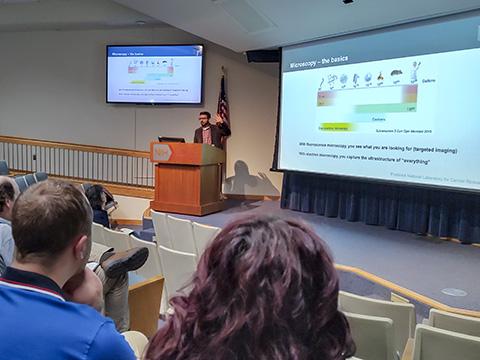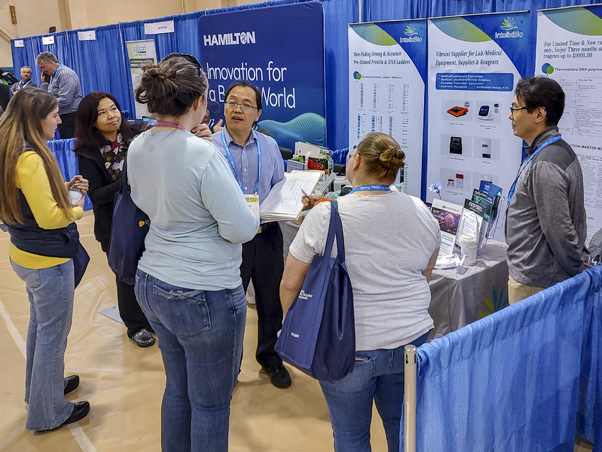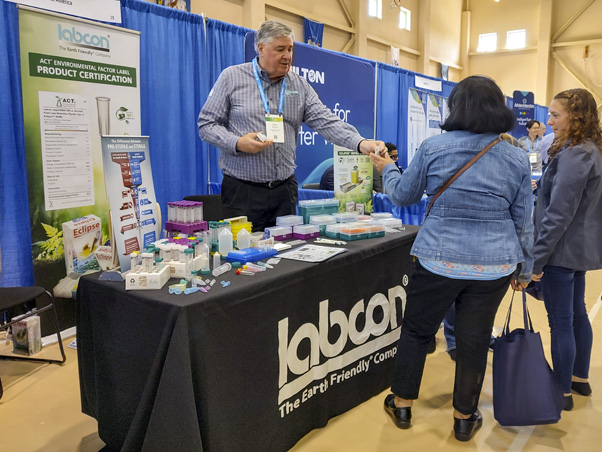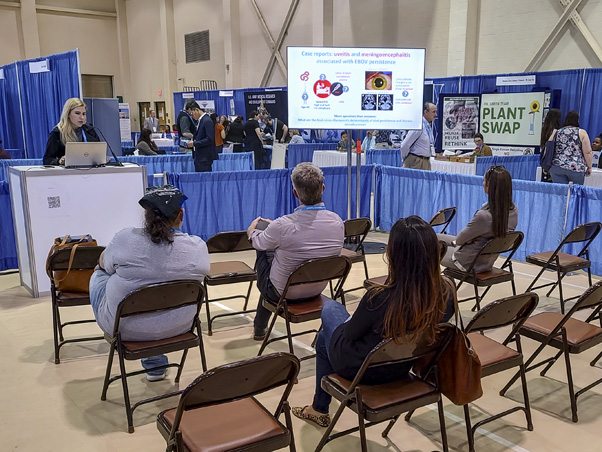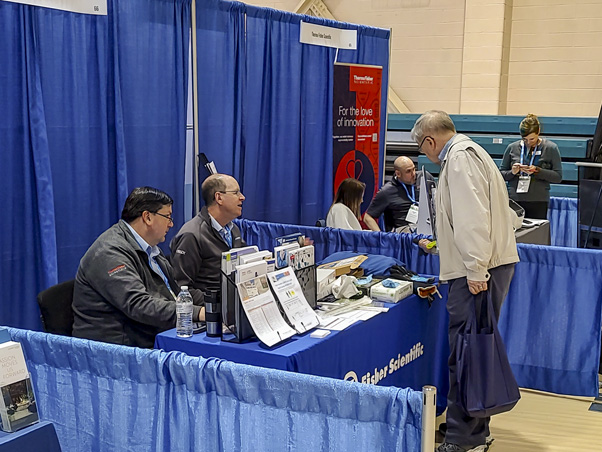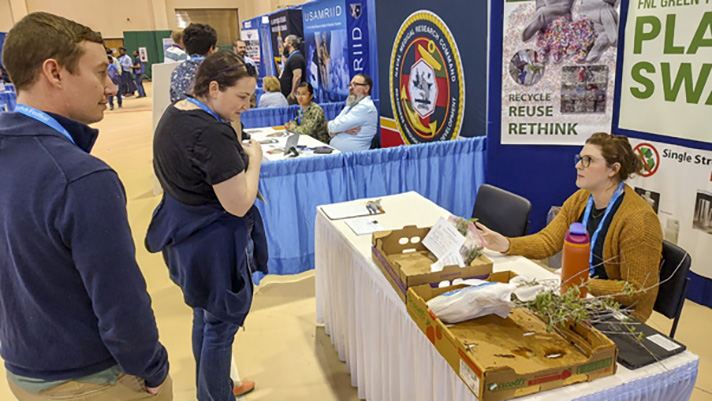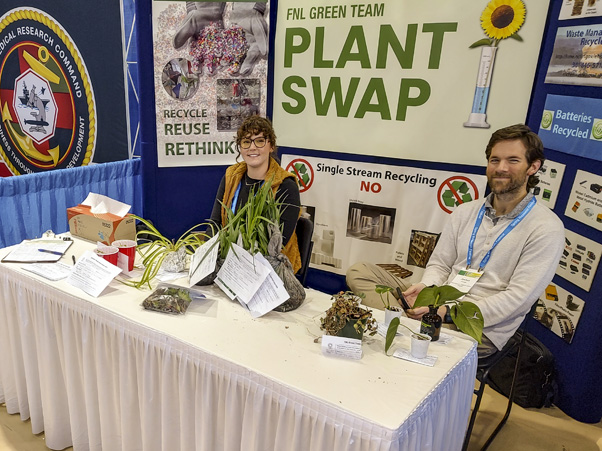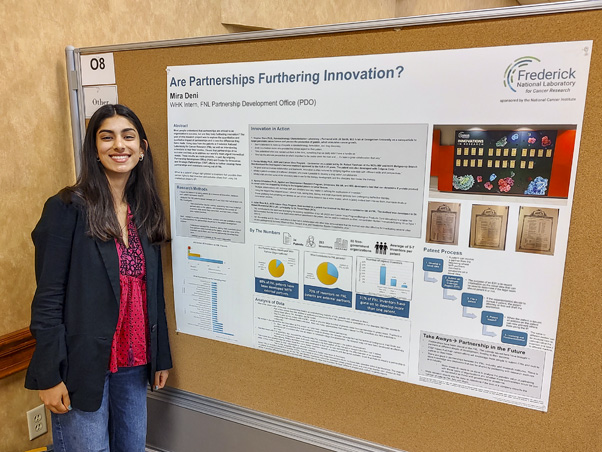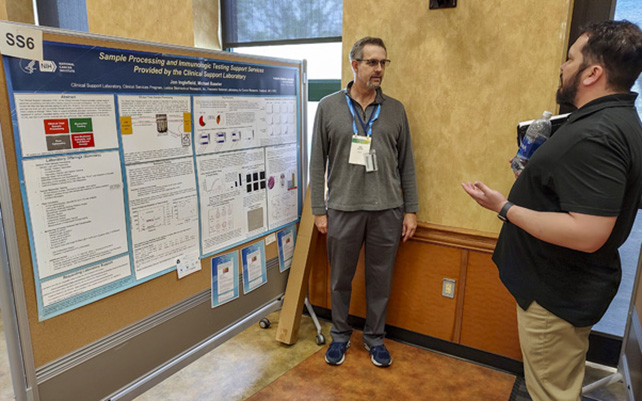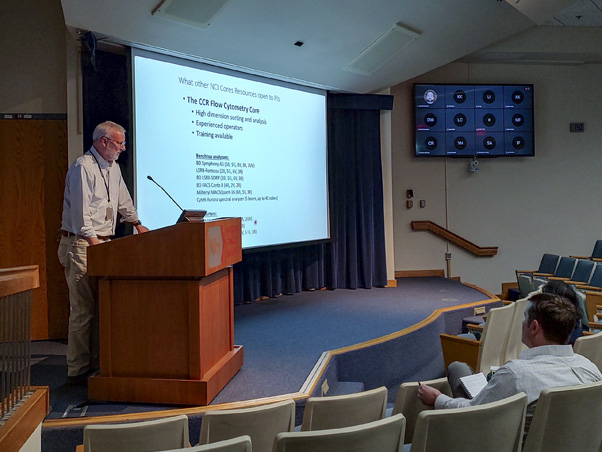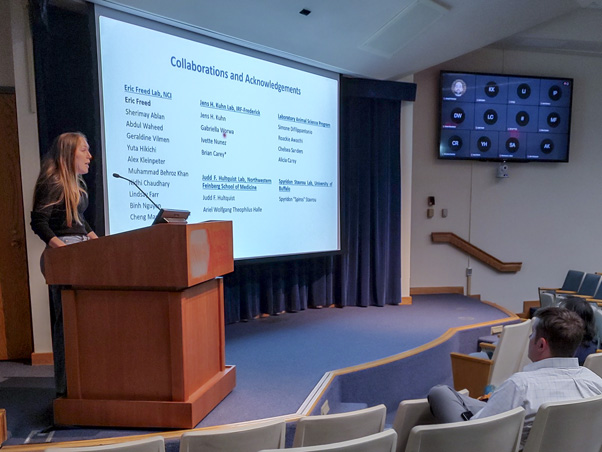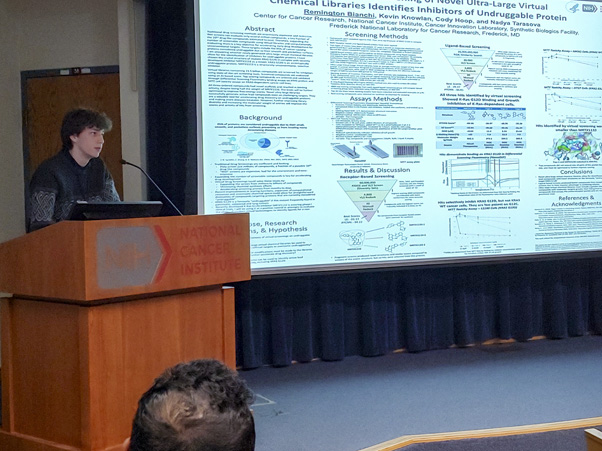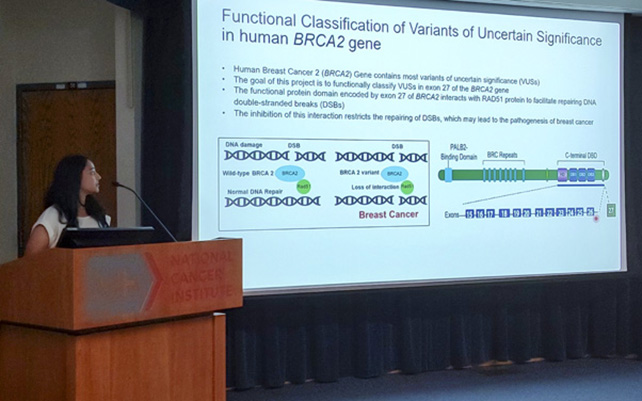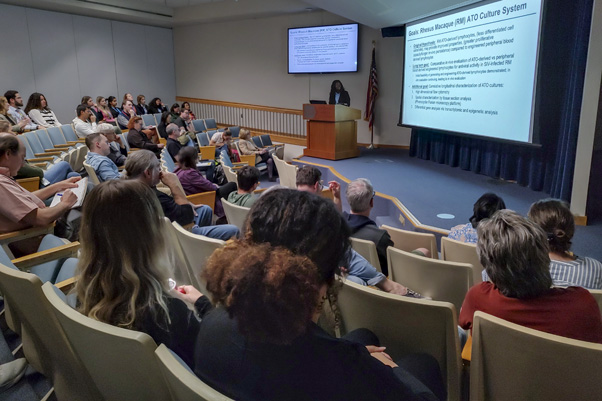Steak is always good, but it’s better with some sizzle.
So said Kedar Narayan, Ph.D., in preparation for his keynote address at the 2024 Fort Detrick Spring Research Festival. Like a chef preparing a meal, he aimed for his lecture to offer the audience something particularly enticing.
Narayan’s words also mirrored the ambitions behind the entire festival, the second one back on-site since the beginning of the COVID-19 pandemic. This was a year of fine-tuning, finding new footing, and striving to attract attendance. Everyone seemed to be trying to add the proverbial sizzle.
Keynote Combines Standout Science with Strong Presentation
For Narayan, a Frederick National Laboratory scientist who leads the Volume Electron Microscopy group at the Center for Molecular Microscopy, that meant thoughtful planning for an entertaining and appealing keynote, trying to engage the audience while sharing his findings. His topic was a review of artificial-intelligence-driven innovation in electron microscopy and how AI is helping transform the field of electron microscopy into a more quantitative science.
To illustrate his concepts—and get the audience’s attention—he made abundant use of animations of volume electron microscopy (vEM) techniques, such as slicing and imaging cell samples to create 3D images. He gave particular focus to what he calls a newer, “acquire and analyze” approach to microscopy.
“This is no longer your grandfather’s electron microscopy,” he said.
The idea behind acquire and analyze is to overcome factors that have limited researchers’ ability to glean information from microscopy scans, Narayan said. The method traditionally has hinged on searching for certain interesting features and taking a select few images of them, a manual approach that leads to information being missed.
With acquire and analyze, microscopists can take tens of thousands of images and then use AI and other specialty tools to find multiple interesting structures or phenomena. To drive home the point, he concluded with a real-time demonstration of his group’s AI-based software that identifies every mitochondrion in scans of a cell in 3D in approximately three seconds—a feat that would take humans months to do.
“vEM and AI can ‘rediscover’ cell biology!” Narayan said.
For the audience, a cross-section of scientists whose biological research intersects with electron microscopy, it was a stimulating idea. Judging by their reaction, the metaphorical steak and sizzle made for a welcome serving. A lively Q&A followed the lecture, and attendees throughout the festival later remarked about being impressed by the keynote.
Organizers Aim to Increase Participation
Across the festival, the event organizers were looking to capture a similar interest. Attendance was lower than expected, they said, but up from last year.
Attendees agreed that there was plenty of good science, from the research showcased in the poster session and symposia to the technology on display at the vendor expo. But there was also an oft-voiced question of how to increase attendance as the festival proceeds in an in-person format. To use Narayan’s metaphor: where was the sizzle lacking?
“Education is the number one reason people come. They want to learn. They want to see what's out there. They want to see innovations. So, we want to highlight that more,” said Karen Vogel, CEO of Event Performance Group, the company that helps Fort Detrick’s planning staff execute the vendor expo.
This year, organizers took small steps on a larger path to that end. In a first, the expo had an area where participating companies could present their research to attendees. The organizers also made a point to invite smaller companies in hot-button areas of technology, such as AI and virtual reality.
“We heard from every exhibitor that they had a wonderful show, that they will be back,” Vogel said. “I love the fact that we’ve brought in new technology.”
Attendees had their own ideas for making the festival more appealing, as well. Several remarked that splitting the event across the NCI Frederick and Fort Detrick campuses made it challenging to see everything. Narayan suggested having a designated time for the poster display so that researchers, judges, and attendees could all meet at once.
Jessica Miles, the festival coordinator at the U.S. Army Medical Research and Development Command, and Vogel both said they’re aware of the remaining challenges and are working on actions to further enhance next year’s event.
‘An Amazing Impression’
Any challenges aside, the festival was still rife with opportunity. Attendees at various points could be overheard exchanging ideas and contact information, and some expressed their appreciation for the science on display.
Anushka Sharma, a Werner H. Kirsten student intern in the Mouse Cancer Genetics Program, was one such participant. She presented research in the poster blitz, her first time speaking about findings while under a time limit.
“Presenting it to the audience was a very eye-opening experience, seeing how involved people of the NCI community are,” she said.
And she, like other attendees, made a point to visit the poster display and vendor expo, where she found an abundance of enticing science.
“The festival was a very new experience for me, but it made an amazing impression. I hope to attend again!” she said.
NCI and FNL Score Several Awards
As usual, awards were given to festival participants with the top scores in adjudicated events. No ceremony could be scheduled this year, but NCI Frederick’s and Frederick National Laboratory’s winners are listed below for posterity.
Outstanding Posters
Cancer Biology: Elise Femino (NCI), Giana Vitale (NCI), Anushka Sharma (NCI)
Developmental and Cell Biology: Enguun Chinbat (NCI)
Emerging Technologies: Madeline Barry (FNL), Weina Ke (FNL)
Gene Therapy, Genome Editing, and Genetics: Swati Sharma (NCI)
Immunology: Pradip Bajgain (NCI)
Informatics: George Zaki (FNL)
Scientific Core Services: Ryan Baugher (FNL)
Structural Biology and Chemistry: Andrew Dobri (NCI), Jiyeon Hwang (NCI)
Other: Rohitesh Kumar (NCI)
Young Investigators Symposium
First Place: Sounak Sahu (NCI)
Third Place: Riley Metcalfe (NCI)
Poster Blitz
First Place: Giana Vitale (NCI)
Second Place: Pradip Bajgain (NCI)
Third Place: Manhue Sahn (NCI)
Feedback about the Spring Research Festival can be sent to NCIFrederick@mail.nih.gov.
Samuel Lopez leads the editorial team in Scientific Publications, Graphics & Media (SPGM). He writes for newsletters; informally serves as an institutional historian; and edits scientific manuscripts, corporate documents, and sundry other written media. SPGM is the creative services department and hub for editing, illustration, graphic design, formatting, multimedia, and training in these areas.


